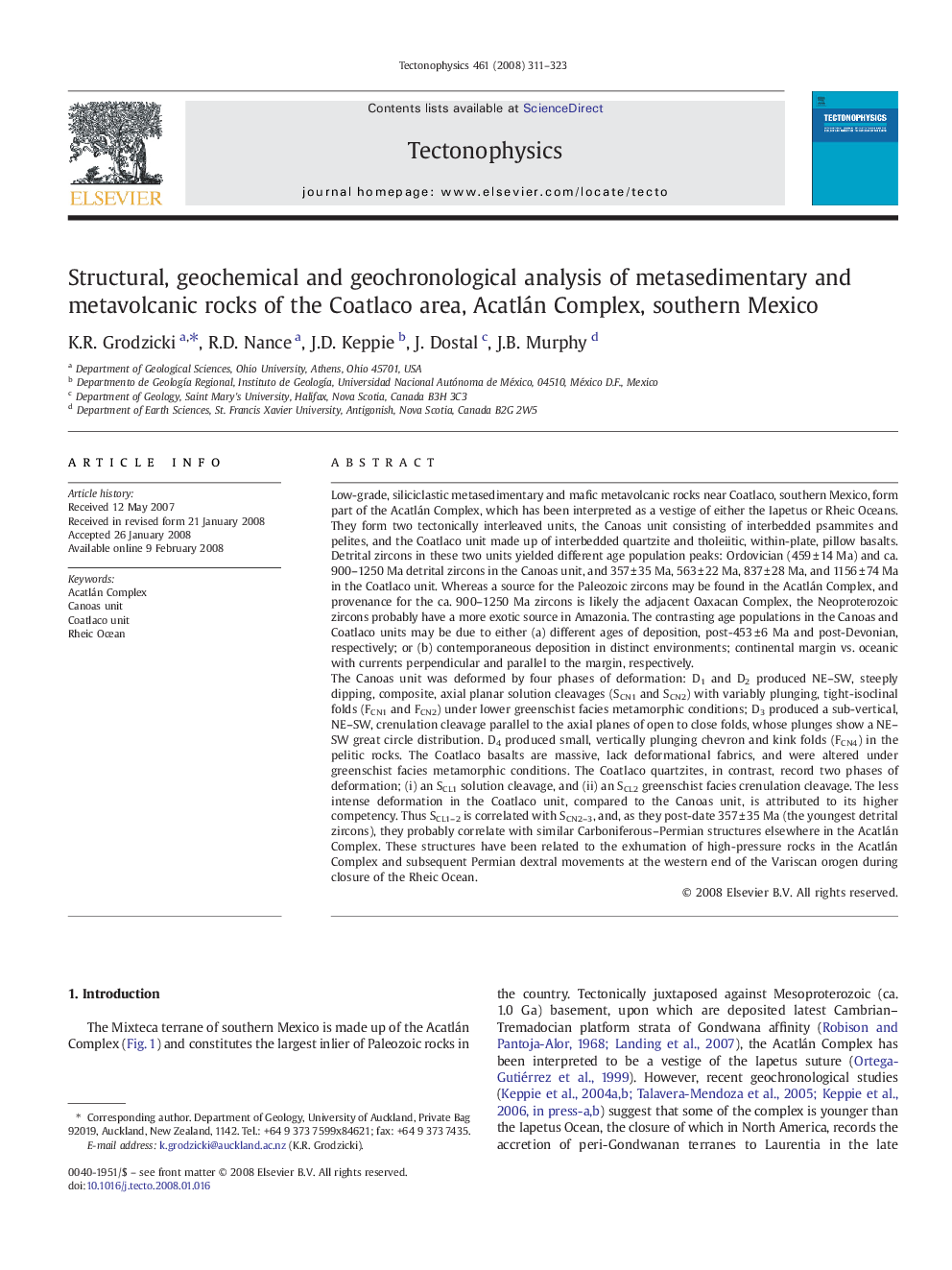| Article ID | Journal | Published Year | Pages | File Type |
|---|---|---|---|---|
| 4694191 | Tectonophysics | 2008 | 13 Pages |
Abstract
The Canoas unit was deformed by four phases of deformation: D1 and D2 produced NE-SW, steeply dipping, composite, axial planar solution cleavages (SCN1 and SCN2) with variably plunging, tight-isoclinal folds (FCN1 and FCN2) under lower greenschist facies metamorphic conditions; D3 produced a sub-vertical, NE-SW, crenulation cleavage parallel to the axial planes of open to close folds, whose plunges show a NE-SW great circle distribution. D4 produced small, vertically plunging chevron and kink folds (FCN4) in the pelitic rocks. The Coatlaco basalts are massive, lack deformational fabrics, and were altered under greenschist facies metamorphic conditions. The Coatlaco quartzites, in contrast, record two phases of deformation; (i) an SCL1 solution cleavage, and (ii) an SCL2 greenschist facies crenulation cleavage. The less intense deformation in the Coatlaco unit, compared to the Canoas unit, is attributed to its higher competency. Thus SCL1-2 is correlated with SCN2-3, and, as they post-date 357 ± 35 Ma (the youngest detrital zircons), they probably correlate with similar Carboniferous-Permian structures elsewhere in the Acatlán Complex. These structures have been related to the exhumation of high-pressure rocks in the Acatlán Complex and subsequent Permian dextral movements at the western end of the Variscan orogen during closure of the Rheic Ocean.
Keywords
Related Topics
Physical Sciences and Engineering
Earth and Planetary Sciences
Earth-Surface Processes
Authors
K.R. Grodzicki, R.D. Nance, J.D. Keppie, J. Dostal, J.B. Murphy,
